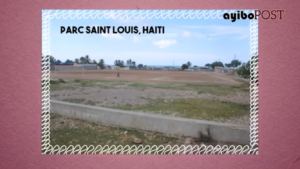This post is also available in: Kreyol
The words “Petro Caribe” have been trending on Haiti Twitter for the last few weeks, and maybe you don’t know what any of it means. For those of you who are from Haiti or who love Haiti, but don’t know what exactly is going on, we wanted to break it down for you to clear up the confusion. We’ve gathered some videos, articles, and links that can explain why people are asking, “Where is the PetroCaribe money??”
What is PetroCaribe?
PetroCaribe is a petroleum program between Venezuela and a number of countries in the Caribbean and Latin America. Basically, Venezuela sells petroleum to these nations at a preferential rate, paying only 5-50% of the cost upfront. The remainder of the cost is considered a loan to be paid back over a 25 year period at a low 1% interest rate. Are you with me still? Basically, Venezuela is giving us a huge discount on petroleum upfront, and they are giving us 25 years to pay back the rest.
What this means is, if the Haitian government is only having to pay a fraction of what they would spend on petroleum, this leaves them with a bunch of money saved. The point of the program is to allow these nations to use this money they would have spent on petroleum towards developmental projects (i.e. schools, hospitals, etc.)
Additional sources:
- Ayibopost made a really great video explaining this. (Kreyòl)
2. What is PetroCaribe? AS COA (English): https://www.as-coa.org/articles/explainer-what-petrocaribe
3. PetroCaribe benefits in the DR – Al Jazeera video (English)
So, where did the money go?
Haiti joined the PetroCaribe program in 2007 while Rene Garcia Preval was president, the United States fought against Haiti joining this alliance. Since joining the alliance, Haiti has had nine prime ministers, several of which have overseen the implementation of PetroCaribe funded projects. Between September 2008 to January 2016, $1.7 billion in PetroCaribe funds were disbursed to be spent on projects around the country
Laurent Lamothe, Prime Minister of Haiti from years 2012 to 2014, under the controversially elected president, Michel Martelly, released a report entitled “La transformation d’Haïti à travers les grands travaux de reconstruction avec les Fonds PetroCaribe” (The Transformation of Haiti through the large reconstruction projects funded by PetroCaribe) presenting the results of what his government claim they invested the funds in. Lamothe stated Nous sommes fiers du travail accompli dans une période aussi courte et avec des ressources limitées… “We are proud of the work we have accomplished in such a short period of time with such limited resources.”
In this report, you will find a reported 234 projects such as soccer stadiums, rebuilding government buildings destroyed in the earthquakes, airports outside of the capital etc. Among other things, Lamothe’s report indicates cost per project, the percentage of completion of each project and the sums of money disbursed towards completing each of those projects.
Link to full PDF of report:
Ok, but where did the money REALLY go?
Now, here’s where this story gets messy. In November 2017, a special senatorial commission released an investigation of the expenses that were made with the PetroCaribe funds. The conclusion of the report was that PetroCaribe funds had been misused, naming a number of government officials, former ministers, even Prime Ministers, and private contractors. It turns out, a number of the projects that the money was said to be used for either did not happen, or way too much money was spent on the little work that did happen.
You might remember (or maybe not) Brothers Posse fronted by Don Kato, aka Senateur Cheramy, released a carnival tune around the theme of PetroCaribe. But besides the few carnival tunes, and a few concerned citizens who refused to keep quiet, not much happened after the release of the report. The government has passed the investigation on to the Cour Superieure des Comptes (Superior Court of Auditors). Beyond that, there has been mostly radio silence on whether or not anybody will be held accountable for the misuse reported in the reports.
Link to full report of senatorial PetroCaribe audit:
Rapport PetroCaribe 10 Novembre 2017
From Twitter to the streets
On August 14, 2018, Gilbert Mirambeau, a Haitian filmmaker, posted a tweet that unleashed a storm. The tweet contains a photo of him blindfolded, holding up a sign asking the questions “Kot kòb Petwo Karibe a?” Where is the PetroCaribe money? People immediately suggested the #PetroCaribeChallenge hashtag challenge, or #KotKòbPetwoKaribeA in Kreyòl. It started with just tweets and photos, and beginning on August 24th 2018, the first sit-in was held in Port-au-Prince in front of La Cour Superieure des Comptes, urging them to issue the report they claim to have been working on all this time. From there, more marches have ensued around the country in Cap Haitian, Les Cayes, Petit-Goave, L’Artibonite etc., even Montreal and New York, to end corruption and impunity. An online petition was launched four days ago. As of the time of publication, it already has nearly 15,000 signatures.
The tweet that started it all:
Kot Kòb Petwo Karibe a ???
.
.
Yon katon, yon plim, epi mande palman an kot kòb la! @SenatHaitien @deputeshaitiens @moisejovenel
.
.#KotKòbPetwoKaribea#PetwoKaribe#PetroCaribe pic.twitter.com/Eb0L4QVvdW— Gilbert Mirambeau Jr🇭🇹 #PwosèPetrocaribeA (@GibszZZz) August 14, 2018
Social media is asking questions: Where is the money?!
Concerned citizens have been asking questions concerning the PetroCaribe funds, how they were supposedly spent, and the silence following the report pointing to misuse. These questions have amplified following the riots that occured in Haiti last July after the government announced an increase in fuel prices.
There are major glaring issues with Lamothe’s reports of the transformations his government claimed were made in 2014. People on social media are performing their own investigation, taking slides displaying projects that Lamothe’s report claimed funds were used for, and reporting on whether those projects actually happened. Here is a thread started by popular blogger @LaLoiDeMaBouche encouraging citizens who live in the concerned areas to update with photos of the projects that should have happened.
An desanm 2014, ansyen PM Lamothe prezante n yon bèl dokiman sou transfòmasyon Ayiti.
Travay grafik la bèl, li swa, li byen prezante men reyalite a pa t gen chans sa.
Lajan #PetroCaribe a depanse men nou toujou rete trè lwen #AyitiNouVleA. pic.twitter.com/7hDVhk9YkC
— La loi de ma bouche (@laloidemabouche) August 22, 2018
Comedian and social commentator Gaelle Bien-Aimé pointed out some of these glaring issues in her latest episode of An Riyan, a political comedy show made in collaboration with Ayibopost. The building of the ministry of foreign affairs for which $26,000,000 USD were disbursed has not yet been built today, and the soccer stadium of Saint Louis du Nord for which $5,000,000 USD were spent, looks like this:
Full video (Kreyòl):
Why should you care?
Here’s the thing. We still owe this money! It was not a gift. It is a loan. A loan that will be left behind for generations of Haitians to repay. And sure, you don’t have to care about anything. You are a grown person who can make your own decisions. However, even if you are a person of Haitian descent outside of Haiti, corruption inside of Haiti concerns you in a number of ways. The Haitian diaspora reportedly sends $2 billion USD to Haiti, close to half of Haiti’s GDP, yearly in transfers and gifts to their families. The Haitian diaspora is an essential factor in Haiti’s economy, and funds that could and should go towards projects that would better the lives of your families back home and give them jobs, are in your interest. Not to mention, the $1.50 tax placed on transfers being sent to Haiti, according to Senator Patrice Dumont, has resulted in about $107 million that cannot be accounted for right now.
Haitians have been fleeing to South America in hopes of making it to the United States in unprecedented amounts, making Haitians a major part of the immigration conversation in the United States as of late. These funds were earmarked for development projects. They could have gone to build roads, hospitals, and infrastructure that Haiti so badly needs. $1.7 billion later, Haiti still ranks 163 out of 188 countries in the human development index. This is what our brothers and sisters have been fleeing. The mass exit of Haitians are a result of corruption and a lack of protection for Haitian citizens.
If you want to join the chorus of voices demanding where this money is, sign this petition: www.change.org
And follow the hashtags! #KotKobPetwokaribeA #AyitiNouVleA #PetroCaribeChallenge
(Kreyòl translation coming soon)
Photo credit: Etant Dupain


M ta renmen konnen kilè n ap vini ak vèsyon kreyòl atik sa a pou moun ki pa konprann lang anglè a.
M ta renmen li atik sa a an kreyòl.Kilè konsa atik sa a ka parèt an kreyòl ?